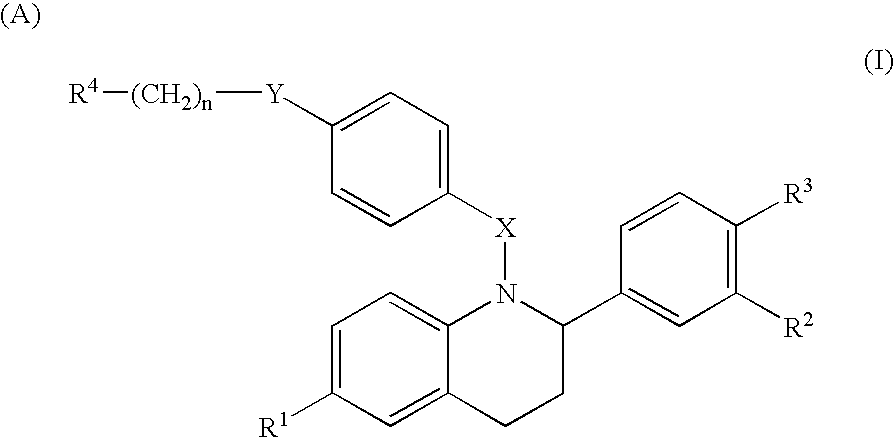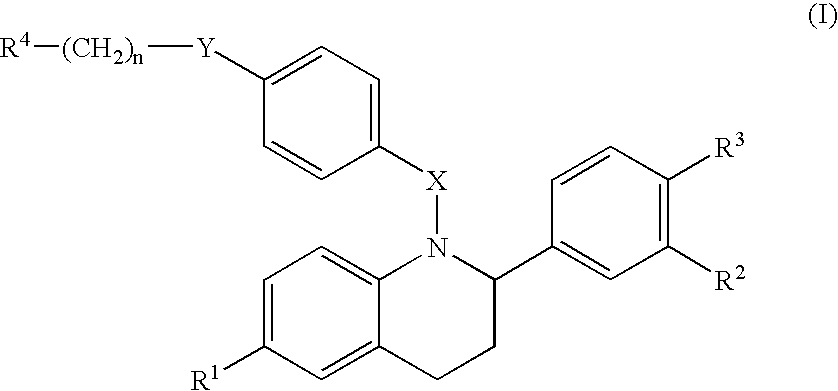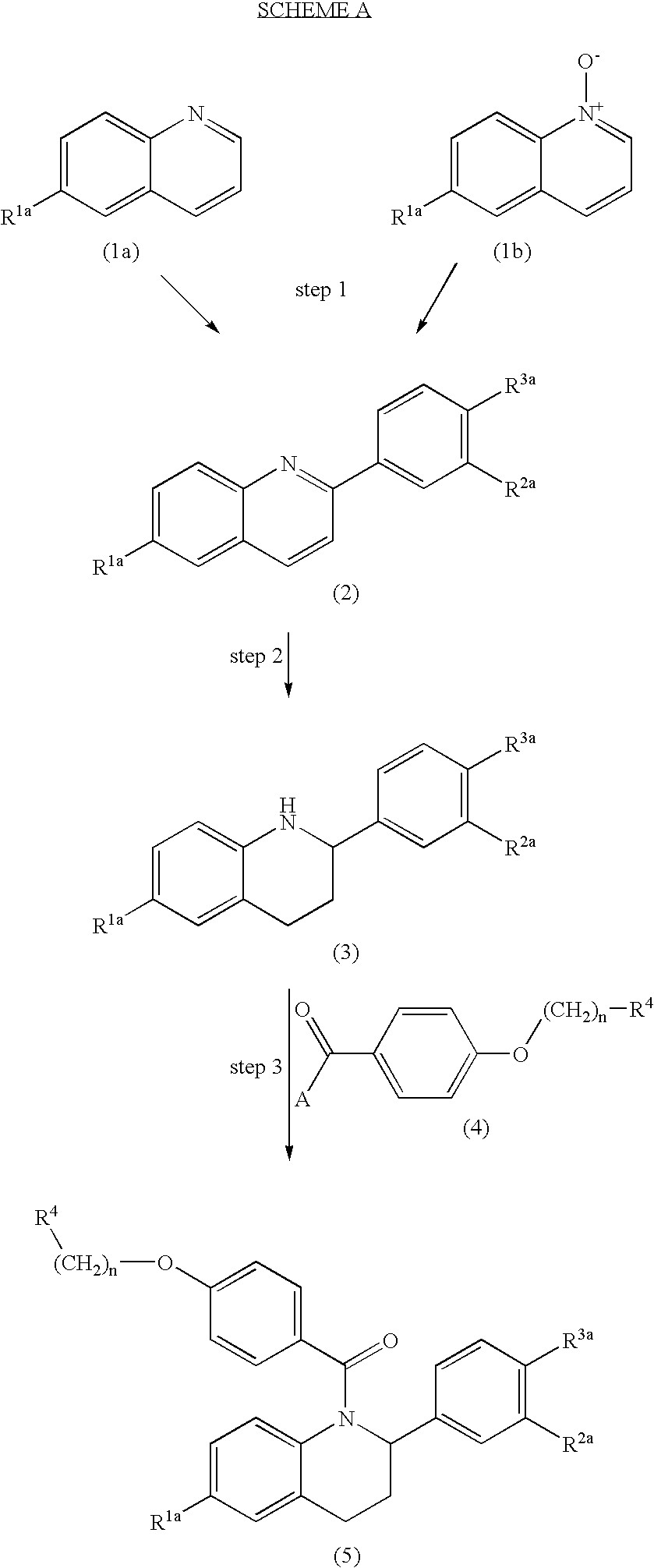2-substituted 1,2,3,4-tetrahydroquinolines and derivatives thereof, compositions and methods
a technology of tetrahydroquinoline and substituted 1,2,3,4tetrahydroquinoline, applied in the direction of biocide, drug composition, cardiovascular disorder, etc., can solve the problems of increasing bone resorption and formation, affecting the skeleton's ability to provide adequate structural support for the body, and affecting the synthesis of tetrahydroquinolin
- Summary
- Abstract
- Description
- Claims
- Application Information
AI Technical Summary
Benefits of technology
Problems solved by technology
Method used
Image
Examples
preparation 1
6-Methoxy-2-(4-methoxy-phenyl)-quinoline
[0089]
[0090]A 500 mL round-bottom flask is charged with 6-methoxy quinoline-N-oxide (8 g, 0.04566 mol.) and placed under nitrogen. The solid is then dissolved in anhydrous THF (100 mL) and cooled to −78° C. with a dry ice / acetone bath, whereupon some of the dissolved solid begins to precipitate. From an addition funnel, methylchloroformate (4.4 ml, 0.05694 mol.) is added dropwise. The bath is removed 10 minutes after the addition, and replaced after 20 minutes. A dropwise addition of 0.5 M anisylmagnesium bromide (112 mL, 0.0560 mol.) is then made. The bath is removed after the addition and the reaction is allowed to warm to room temperature. The reaction is quenched with 5% sodium bicarbonate solution. The THF is removed in vacuo and the resulting mixture is diluted with water and extracted with methylene chloride. The extracts are collected and dried with anhydrous sodium sulfate and concentrated. The crude product is purified by flash chrom...
preparation 2
6-Methoxy-2-pheyl-quinoline
[0091]
[0092]6-Methoxy-2-phenyl quinoline is prepared in a manner analogous to that of Preparation 1 using phenyl magnesium bromide. 1H NMR: ∂ 8.07–8.15 (m, 4H), 7.84 (d, J=8.8 Hz, 1H), 7.50–7.54 (m, 2H), 7.42–7.46 (m, 1H), 7.39 (dd, J=9 Hz, 3 Hz, 1H), 7.10 (d, J=2.4 Hz, 1H), 3.95 (s, 3H).
preparation 3
6-Methoxy-2-(4-methoxyphenyl)-1,2,3,4-tetrahydroquinoline
[0093]
[0094]A 500 mL round-bottom flask is charged with the compound of Preparation 1 (3 g, 0.01131 mol) and absolute ethanol (150 mL). The mixture is placed under nitrogen and brought to reflux. Sodium metal pellets are added periodically until no starting material remains by TLC (30% EtOAc / hexanes). The reaction is cooled to room temperature, diluted with water, and extracted with methylene chloride. The combined extracts are then washed with water and brine. The organic is separated and dried with anhydrous sodium sulfate. The solvent is removed in vacuo to yield 3.05 g (100%) of a gold oil. No purification is necessary. 1H NMR: ∂ 7.32 (app. d, J=8.4 Hz, 2H), 6.89 (app. d, J =8.8 Hz, 2H), 6.61–6.65 (m, 2H), 6.49 (d, J=8.4 Hz, 1H), 4.31 (dd, J=10 Hz, 2.8 Hz, 1H), 3.81 (s, 3H), 3.75 (s, 3H), 2.90–2.99 (m, 1H), 2.73 (dt, J=16.4 Hz, 4.6 Hz, 1H), 2.04–2.10 (m, 1H), 1.91–2.01 (m, 1H).
PUM
| Property | Measurement | Unit |
|---|---|---|
| temperature | aaaaa | aaaaa |
| temperature | aaaaa | aaaaa |
| time | aaaaa | aaaaa |
Abstract
Description
Claims
Application Information
 Login to View More
Login to View More - R&D
- Intellectual Property
- Life Sciences
- Materials
- Tech Scout
- Unparalleled Data Quality
- Higher Quality Content
- 60% Fewer Hallucinations
Browse by: Latest US Patents, China's latest patents, Technical Efficacy Thesaurus, Application Domain, Technology Topic, Popular Technical Reports.
© 2025 PatSnap. All rights reserved.Legal|Privacy policy|Modern Slavery Act Transparency Statement|Sitemap|About US| Contact US: help@patsnap.com



